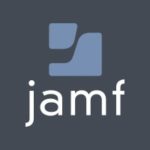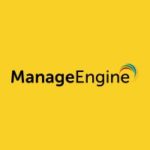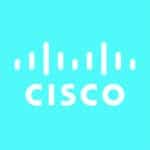Mobile device management software remotely controls all of an enterprise’s mobile devices used for work or data processing. It’s particularly important for companies that have multiple remote office locations or work-from-home employees. Without a unified endpoint management or MDM solution, enterprises are limited in their ability to provide flexible remote work environments and further their […]


Mobile device management software remotely controls all of an enterprise’s mobile devices used for work or data processing. It’s particularly important for companies that have multiple remote office locations or work-from-home employees. Without a unified endpoint management or MDM solution, enterprises are limited in their ability to provide flexible remote work environments and further their business during emergencies that require remote network and computer access.
MDM software allows enterprises to update devices and provide applications to workers who need them. It also increases security as company data is geographically dispersed and goes beyond physical protection.
Jump to:
MDM solutions need to be flexible and secure, giving enterprises a wide range of remote management capabilities. Common mobile device management features include:
The last feature is important because bring your own device (BYOD) policies complicate business security; employees want to retain autonomy over their personal devices while still using those personal devices to work. And, many companies want employees to be able to use their personal devices for work — it saves the business money and its convenience allows employees to be more productive.
However, BYOD threatens company security because employees don’t follow the same safety protocols on their personal devices as they would have to on company laptops or phones. If an attacker breached a personal device through downloaded malware or public Wi-Fi, they could realistically access company data, too. This is why many MDM solutions containerize company data.
Also Read: Top RMM Software | Remote Monitoring & Management Tools
Mobile device management software presents risks to enterprises at the same time that it offers flexibility and safety features. MDM software risks include:
MDM software mitigates risks by:
Compromised software bugs and potential exploits are risks that all businesses take when they use MDM software. Choosing solutions with multiple security precautions, such as encryption management and identity access management, is a first step to MDM safety.
Also Read: Remote Work and Mobile Device Security
The following seven solutions offer management features for enterprises that need to automate device deployment and remote control.
Best solution for all-Apple SMBs 
Jamf Pro is a made-for-Mac MDM solution that provides remote management for hundreds of devices and real-time support to businesses with limited IT resources. It’s an especially popular software within the education field, allowing schools and universities to easily deploy apps for video conferencing and provision devices like tablets. For smaller enterprises and educational facilities that don’t have large dedicated IT teams, Jamf Pro offers Apple IT management.
Jamf makes regular software updates and is quick to address Apple software changes so that the product will continue working with current operating system versions. Jamf Pro also has a lively and helpful user community, Jamf Nation, for customers to discuss the software and note problems. Jamf actively monitors the community, and if multiple people are encountering the same issue, Jamf will look for a solution.
Key Differentiators:
Cons:
Best solution for businesses that need to track both iOS and Android phones
ManageEngine Mobile Device Manager Plus is a cloud-based MDM for iOS and Android devices. Using ManageEngine, enterprises can apply policies, enroll devices, and deploy applications. ManageEngine helps businesses disable any lost devices and control company asset movement.
The Fence Repository allows customers to choose from a collection of geo-fences, which helps businesses stay compliant with geographical data restrictions. ManageEngine also integrates with Apple Business Manager, formerly Apple DEP, through which businesses automate Apple device deployment. This feature is useful for large enterprises using hundreds or thousands of Apple phones, tablets, computers, and TVs.
Key Differentiators:
Cons:
Best network and device monitoring solution 
Cisco Meraki Systems Manager is an endpoint mobility management solution: it’s a device management platform that doubles as an MDM because of its native integration with Meraki networking products. Meraki is a great catch-all solution for small and medium-sized enterprises if they need both remote monitoring features and mobile device management. Meraki provides cloud-based network visibility for both on-premises and remote hardware.
When Systems Manager is integrated with Meraki network access points, admins can restrict network access to only devices that have the solution installed. System Manager can integrate with other Cisco networking products as well as Meraki. System Manager software can also run on mobile devices.
Key Differentiators:
Cons:
Best for EU customers with IT personnel 
Miradore’s MDM solutions allows users to deploy configuration profiles to devices and secure devices through passcode policies and locking. Businesses can view each device’s location, serial number, and most recent report date; they can also view a list of applications on the device and track its activity.
Miradore’s security features include automated patch management, storage encryption management, and selective device wiping, which allows users to only wipe company data and leave personal data on the device. Data wipes are required for GDPR compliance, one of the most important legal requirements for enterprises that access company data on remote devices.
Miradore offers a free version of the software for small businesses, though its features are limited and don’t include location services or application management.
Key Differentiators:
Cons:
Best solution for technical customer support 
Hexnode Unified Endpoint Management (UEM), also known as Hexnode MDM, supports a wide range of devices, from Android phones to Apple TVs. Hexnode allows enterprises to view a list of applications on a device, track the device’s activity and location, and lock it remotely. Hexnode also readily develops and adds new features to the software, including ones that users request.
Though Hexnode offers multiple useful MDM features to enterprises, customers spoke highly of the company’s customer service. Hexnode’s technical support team received multiple accolades, and though many remote management platforms have great customer support reviews, Hexnode received a proportionately large amount of praise for its chat feature, tech support, and readiness to help.
Key Differentiators:
Cons:
Best choice for large enterprises with a variety of operating systems 
Citrix EM is a mobile endpoint solution for remote teams that are accessing virtualized environments. Citrix streamlines application access, giving remote employees a similar experience from home computers that they would have in office, while providing security so that business data is protected. Citrix supports macOS, iOS, Windows 10, Android, and Chrome OS, a wide variety of operating systems.
By installing Citrix EM’s receiver onto a device, employees have a virtual desktop and access to all of the company applications they need. Citrix simplifies IT admins’ job in large organizations where many remote devices are difficult to access and secure.
Key Differentiators:
Con:
Citrix software, endpoint devices, or applications sometimes lag, and opening links can slow the software
Best for small enterprises that need one solution for onboarding employees
Rippling isn’t just device management software; it’s a human resources solution that offers payroll, benefits, documents, and time-off management. Rippling allows businesses to streamline onboarding tasks, including shipping new company devices to employees and managing their password creation and all applications. Rippling installs an app on each employee device that allows a company to remotely manage all computers and phones.
Through Rippling, businesses can order and ship devices, track and wipe lost devices, and track application use. Enterprises use Rippling to wipe and reassign devices to new employees and remotely install new applications that employees need.
Key Differentiators:
Cons:
Enterprises searching for mobile device management software should consider solutions that:
Also Read: Best Enterprise Mobility Management Solutions & Software 2021


Jenna Phipps is a staff writer for Enterprise Storage Forum and eSecurity Planet, where she covers data storage, cybersecurity and the top software and hardware solutions in the storage industry. She’s also written about containerization and data management. Previously, she wrote for Webopedia. Jenna has a bachelor's degree in writing and lives in middle Tennessee.

Enterprise Storage Forum offers practical information on data storage and protection from several different perspectives: hardware, software, on-premises services and cloud services. It also includes storage security and deep looks into various storage technologies, including object storage and modern parallel file systems. ESF is an ideal website for enterprise storage admins, CTOs and storage architects to reference in order to stay informed about the latest products, services and trends in the storage industry.
Property of TechnologyAdvice. © 2025 TechnologyAdvice. All Rights Reserved
Advertiser Disclosure: Some of the products that appear on this site are from companies from which TechnologyAdvice receives compensation. This compensation may impact how and where products appear on this site including, for example, the order in which they appear. TechnologyAdvice does not include all companies or all types of products available in the marketplace.